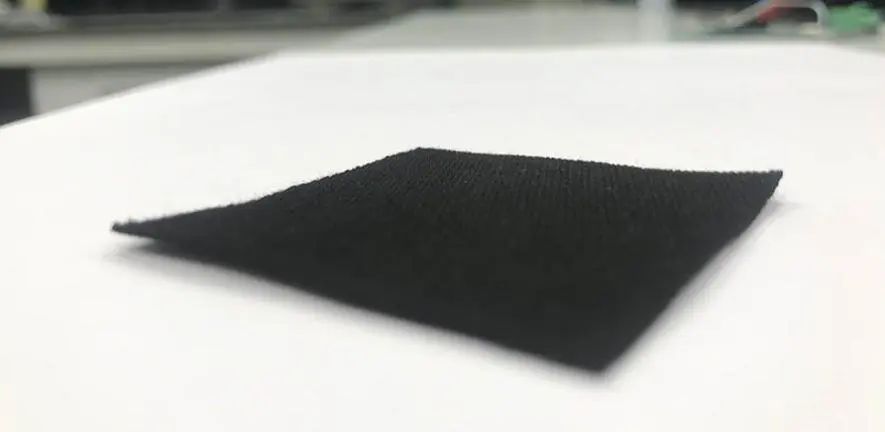“我们首当其冲要做的事情是减少全球碳排放,但消除温室气体也被认为是实现净零排放和限制气候变化最坏影响的必要条件。事实上,我们必须竭尽全力。”
-------Alex Forse
“The first and most urgent thing we’ve got to do is reduce carbon emissions worldwide, but greenhouse gas removal is also thought to be necessary to achieve net zero emissions and limit the worst effects of climate change. Realistically, we’ve got to do everything we can”.
------------Alex Forse
剑桥大学研究人员开发出一种低成本、节能的方法,来制造可以直接从空气中捕捉二氧化碳的材料。
Researchers have developed a low-cost, energy-efficient method for making materials that can capture carbon dioxide directly from the air.
剑桥大学的研究人员使用了一种类似于给电池充电的方法来为常用于家用滤水器的活性炭充电。
Researchers from the University of Cambridge used a method similar to charging a battery to instead charge activated charcoal, which is often used in household water filters.
通过用与CO2形成可逆键的离子给活性炭“海绵”充电,研究人员发现该充电材料可以直接从空气中捕获CO2。
By charging the charcoal ‘sponge’ with ions that form reversible bonds with CO2, the researchers found the charged material could successfully capture CO2 directly from the air.
这种充电的活性炭海绵可能比现有的碳捕捉方法更节能,因为它去除捕获的二氧化碳所需要的温度更低,从而存储起来也更方便。研究结果已发表在《自然》期刊上。
The charged charcoal sponge is also potentially more energy efficient than current carbon capture approaches, since it requires much lower temperatures to remove the captured CO2 so it can be stored. The results are reported in the journal Nature.
“从大气中捕获碳排放是最后的手段,但鉴于气候危机的紧急程度,我们需要对其展开研究,”领导这项研究的剑桥大学Yusuf Hamied化学系的Alexander Forse博士说。“我们首当其冲要做的事情是减少全球碳排放,但消除温室气体也是实现净零排放和限制气候变化最坏影响的必要条件。事实上,我们必须竭尽全力。”
“Capturing carbon emissions from the atmosphere is a last resort, but given the scale of the climate emergency, it’s something we need to investigate,” said Dr Alexander Forse from the Yusuf Hamied Department of Chemistry, who led the research. “The first and most urgent thing we’ve got to do is reduce carbon emissions worldwide, but greenhouse gas removal is also thought to be necessary to achieve net zero emissions and limit the worst effects of climate change. Realistically, we’ve got to do everything we can.”
使用海绵状材料从大气中直接捕获二氧化碳以实现从大气中去除二氧化碳的方法是可行的,但目前该类方法成本高昂,需要高温以及使用天然气,并且缺乏稳定性。
Direct air capture, which uses sponge-like materials to remove carbon dioxide from the atmosphere, is one potential approach for carbon capture, but current approaches are expensive, require high temperatures and the use of natural gas, and lack stability.
“在使用多孔材料从大气中碳捕捉方面,我们已经做了一些颇有前景的工作,”Forse说。“我们想看看活性炭是否可能是一个选择,因为它便宜、稳定,并且能够大规模生产。”
“Some promising work has been done on using porous materials for carbon capture from the atmosphere,” said Forse. “We wanted to see if activated charcoal might be an option, since it’s cheap, stable and made at scale.”
活性炭用于许多净化装置,如滤水器,但通常不能从空气中捕获和储存CO2。Forse和他的同事提出,如果活性炭可以像电池一样充电,那么它就能成为合适的碳捕捉材料。
Activated charcoal is used in many purification applications, such as water filters, but normally it can’t capture and hold CO2 from the air. Forse and his colleagues proposed that if activated charcoal could be charged, like a battery, it could be a suitable material for carbon capture.
在给电池充电时,带电离子被注入电池的一个电极。研究人员进行了一种假设:通过用名为氢氧化物的化合物为活性炭充电,可以使其适合于碳捕捉,因为氢氧化物与CO2形成可逆键。
When charging a battery, charged ions are inserted into one of the battery’s electrodes. The researchers hypothesised that charging activated charcoal with chemical compounds called hydroxides would make it suitable for carbon capture, since hydroxides form reversible bonds with CO2.

用于碳捕捉的活性炭样本
Sample of activated charcoal used to capture carbon dioxide
Credit: Alex Forse
该研究团队使用类似于电池的充电过程,用氢氧离子为廉价的活性炭布充电。在这个过程中,活性炭布基本能像电池中的电极一样,氢氧离子积聚在了活性炭的小孔中。在充电过程结束时,活性炭从“电池”中被移除,进行清洗和干燥。
The team used a battery-like charging process to charge an inexpensive activated charcoal cloth with hydroxide ions. In this process, the cloth essentially acts like an electrode in a battery, and hydroxide ions accumulate in the tiny pores of the charcoal. At the end of the charging process, the charcoal is removed from the “battery”, washed and dried.
对充电活性炭海绵的测试显示,由于氢氧化物的键合机制,它可以成功地直接从空气中捕获CO2。
Tests of the charged charcoal sponge showed that it could successfully capture CO2 directly from the air, thanks to the bonding mechanism of the hydroxides.
“这是一种用类似电池的工艺制造材料的新方法,”弗斯说。“CO2捕捉的速率已经可以与现有材料相比。但更有前景的是,这种方法可能耗能更少,因为我们不需要用高温收集CO2和再生活性炭海绵。”
“It’s a new way to make materials, using a battery-like process,” said Forse. “And the rates of CO2 capture are already comparable to incumbent materials. But what’s even more promising is this method could be far less energy-intensive, since we don’t require high temperatures to collect the CO2 and regenerate the charcoal sponge.”
为了从活性炭中收集CO2并进行纯化和储存,该材料被加热以逆转氢氧化物-CO2键。目前用于从空气中捕捉CO2的大多数材料需要使用天然气以加热至高达900°C的温度。
To collect the CO2 from the charcoal so it can be purified and stored, the material is heated to reverse the hydroxide-CO2 bonds. In most materials currently used for CO2 capture from air, the materials need to be heated to temperatures as high as 900°C, often using natural gas.
然而,剑桥团队开发的充电活性炭海绵仅需要加热到90-100°C,这温度使用可再生电力就可达到。该活性炭材料通过电阻加热,从内部向外加热,从而使过程更快且能耗更少。
However, the charged charcoal sponges developed by the Cambridge team only require heating to 90-100°C, temperatures that can be achieved using renewable electricity. The materials are heated through resistive heating, which essentially heats them from the inside out, making the process faster and less energy-intensive.
然而,这些材料确实存在局限性,研究人员正在解决这些问题。“我们正在努力增加可以捕获CO2的量,特别是在潮湿条件下材料性能下降时,”Forse说。
The materials do, however, have limitations that the researchers are now working on. “We are working now to increase the quantity of carbon dioxide that can be captured, and in particular under humid conditions where our performance decreases,” said Forse.
研究人员表示,他们的方法在碳捕捉之外的领域也可能有用,因为活性炭中的孔隙和注入其中的离子可以进行微调,从而捕获各种分子。
The researchers say their approach could be useful in fields beyond carbon capture, since the pores in the charcoal and the ions inserted into them can be fine-tuned to capture a range of molecules.
“这是我们在新冠肺炎封禁期间想出的一个疯狂点子,所以当这些想法真的奏效时,我们特别激动,”Forse说。“这种方法打开了一扇大门,以一种简单节能的方式制造可应用于不同场景的各种材料。”
“This approach was a kind of crazy idea we came up with during the Covid-19 lockdowns, so it’s always exciting when these ideas actually work,” said Forse. “This approach opens a door to making all kinds of materials for different applications, in a way that’s simple and energy-efficient.”
该团队已申请一项专利,研究正在剑桥大学的商业化部门剑桥企业的支持下进行商业化。
A patent has been filed and the research is being commercialised with the support of Cambridge Enterprise, the University’s commercialisation arm.
该研究得到了Leverhulme信托、皇家学会、英国科研创新署下属工程与物理学研究委员会和剑桥气候修复中心的支持。
The research was supported in part by the Leverhulme Trust, the Royal Society, the Engineering and Physical Sciences Research Council (EPSRC), part of UK Research and Innovation (UKRI), and the Centre for Climate Repair at Cambridge.